November 24, 2023
The Future of Virtual Home Staging: How AI Is Revolutionizing Real Estate
First impressions are everything when it comes to marketing homes on the Internet. Potential buyers and renters browse sites like Realtor.com, Zillow, and more, looking for the perfect new home.
How the home looks in the photos often determines whether the individual decides to tour the home. That’s where virtual staging comes in handy.
In this article, we’ll compare different staging options for real estate listings. We’ll discuss the pros and cons of virtual home staging with AI, virtual staging with designers, and traditional staging to help you determine which to use to spruce up your listings.
Types of Home Staging
The evolution of technology has changed the game for real estate agents. It’s expanded the possibilities for creating appealing images of beautifully staged homes for publishing listings on Zillow, Realtor.com, and similar sites.
These advances have led to virtual home staging with designers and AI. Both methods are alternatives to traditional home staging.
With that in mind, let’s take a closer look at each type of home staging.
Traditional Home Staging
Traditional home staging involves professional home stagers coming to a property with furnishings and decor and staging it so potential buyers can see what it looks like with furniture.
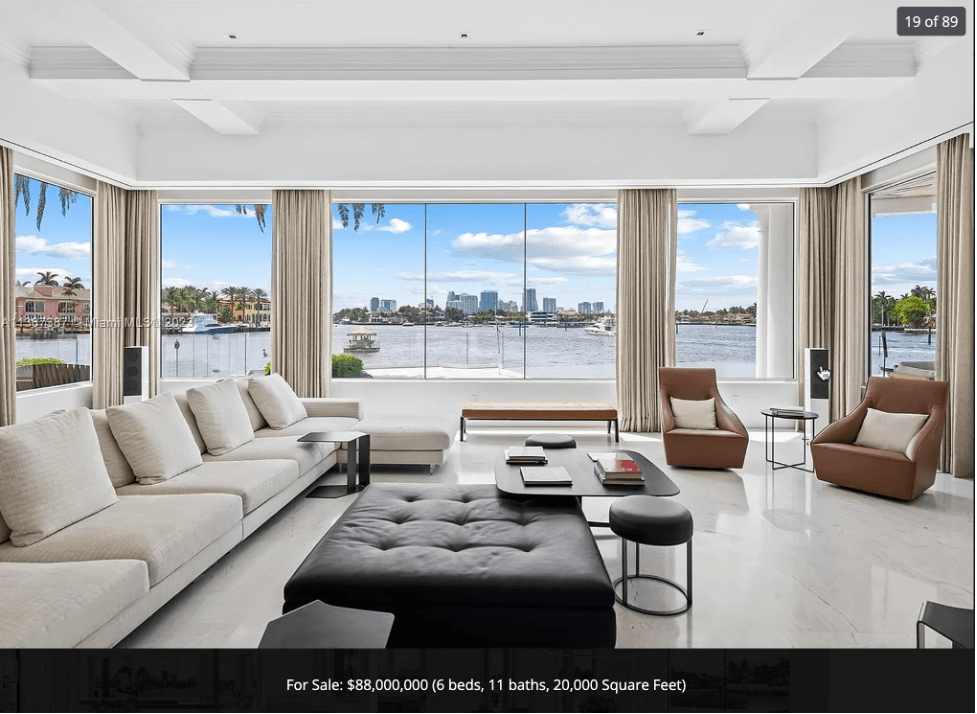
Sometimes, staging furniture is rented, and other times, the furniture is purchased so the home can be sold furnished. It is up to the realtor to determine which is most appropriate for each listing.
Traditional home staging is often most appropriate for luxury properties where asking prices are in the seven-figure range and above. That is because realtors’ commission on these sales is significant, so the budget for traditional staging is worth it.
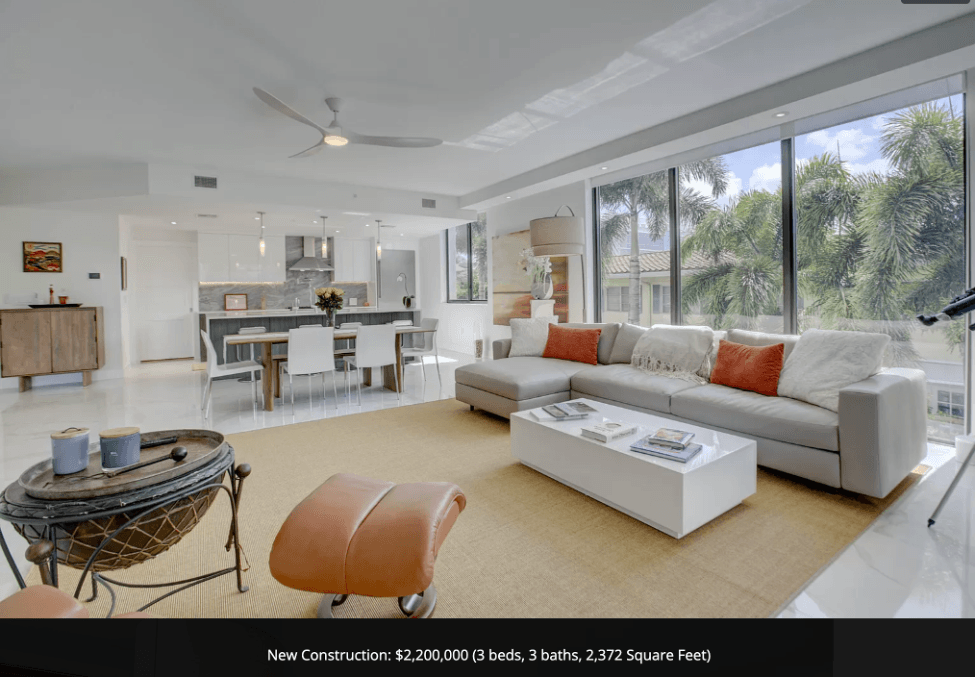
Virtual Home Staging With Designers
Another option is virtual staging with designers. With this method, designers use Photoshop-like technology to digitally add furnishings and decor to photos of empty rooms so buyers can visualize what the space might look like.
Virtual home staging with designers is a happy medium between home staging with AI and traditional home staging.
With this type of staging, you’ll need to provide the designer with high-resolution (often professional) photos of a clean, empty property. If possible, you should provide different angles for each room so the designer has options to work with.
When choosing a graphic designer, you can either stay local or outsource the work to freelancers overseas. The appeal of staying local is that the designer will be familiar with the styles most suitable for your local market. On the other hand, outsourcing to designers overseas is typically more affordable.
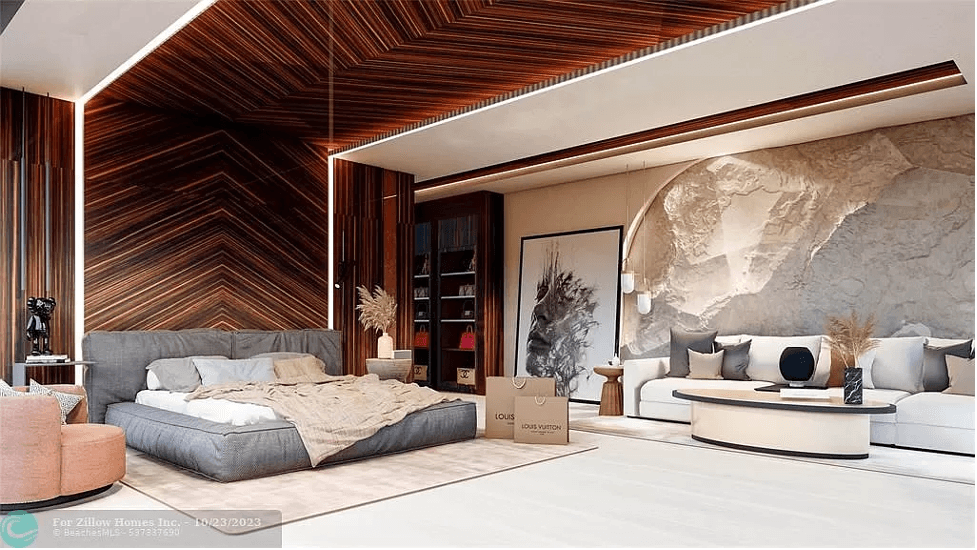
This method is appropriate for listings with middle-of-the-road budgets. If you’re not sure what this means, think about the commission you could earn based on the asking price and use that as a gauge to determine if it’s worth investing in a designer’s services.
Virtual Home Staging With AI
Virtual home staging with AI is the most cutting-edge approach to staging properties.
With this method, a user uploads a photo to an app or website and chooses a room type and furniture style they want to represent in the photo. From there, the AI digitally renders images according to the user’s choices.
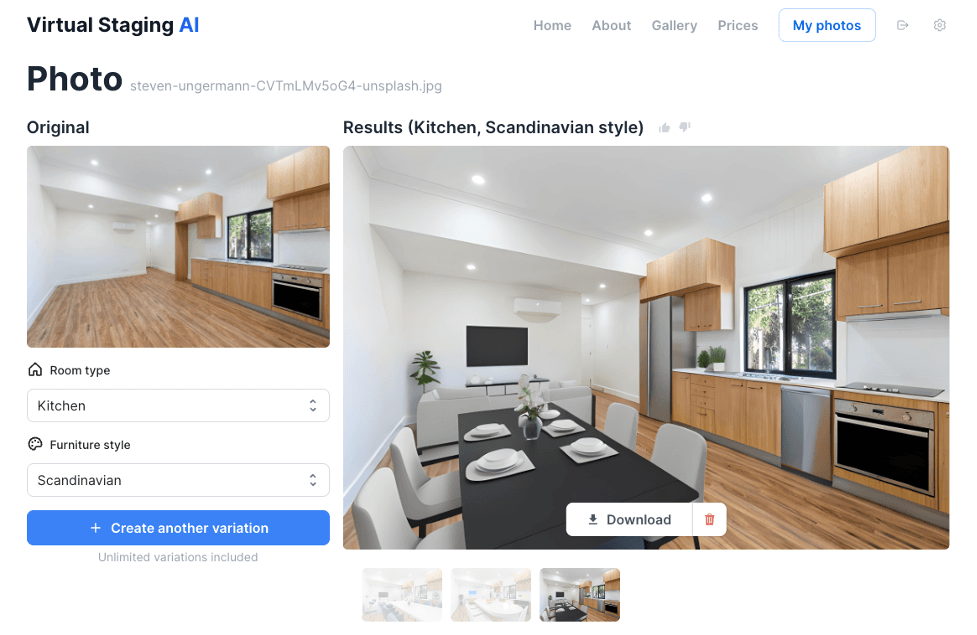
Render done with Virtual Staging AI
All you need for this staging method is clear photos of each room of the property and a reliable AI staging tool.
For smaller listings, you may get away with smartphone photos if the lighting and angles are sufficient. However, for properties with high listing prices, it’s worth the investment in a professional photographer.
If you’re looking for a great site for AI home staging, head to Virtual Staging AI and test the technology for free.
Costs of Home Staging
One of the perks of having different options for staging a home is that there are methods available for every budget.
Here’s a breakdown of the costs associated with different types of home staging.
Costs of Traditional Home Staging
The cost of traditional staging varies based on the size of the home. As a general reference, you can expect the staging costs to land around 1% of the home’s total cost.
Stagers typically charge a flat fee for the initial consultation for the property. Beyond that, you’ll need to pay a fee for staging each room and monthly fees for furniture rentals.
If you want to sell the home furnished, you’ll have to purchase the furniture rather than rent it. This option is considerably more expensive and is most appropriate for luxury properties.
Costs of Virtual Home Staging With Designers
Virtual home staging with a designer is significantly more affordable than traditional staging.
Most designers charge per image, but some charge per property or hourly rate. The rate ranges from about $20 to $80 per image.
Designers in the United States will be more expensive, and designers overseas typically cost less. You can weigh the options to see if locality or budget is more important for your business.
Costs of Virtual Home Staging With AI
Using AI for staging a home is the cheapest option. You can stage a home with AI for free, but the images will feature watermarks. Removing the watermark on AI-staged images costs a couple of dollars per image.
With VSAI, removing the watermark is $12 for six images. This small fee also unlocks different decor styles and higher-resolution renderings. It also makes it easy to watermark your staged photos with your logo.
Benefits of Home Staging
There are many benefits of staging homes for sale or rent. However, one of the key motivations for staged homes is to sell faster and for higher prices.
In fact, experts report that sales are 73% faster when the home is staged. Ensuring that a home is staged, even virtually, is particularly important in a competitive real estate market where 95% of buyers start their search online. Home staging generally yields an 8–10% return on investment (ROI).
With that, there’s a growing trend of real estate agents choosing virtual staging to entice buyers to their listings. This cost-effective method makes it possible to maximize that return.
However, each home staging type we’ve introduced in this article has unique benefits. Let’s check them out.
Benefits of Traditional Home Staging
Traditional home staging has significant benefits, especially in the luxury real estate market.
The main benefit is that buyers can experience furniture and decor in real life and create perfectly staged images for listings. Plus, when potential buyers visit a home and see the place furnished, it helps them make an emotional connection.

As we mentioned before, traditional home staging also comes with the benefit that the property can be sold furnished. Buyers of high-end homes often appreciate the cohesive, luxury styles that come with professionally designed homes.
Benefits of Virtual Home Staging With Designers
Virtual home staging with designers comes with a slew of benefits that are much different than the benefits of traditional staging.
The most notable benefit is its reasonable cost compared to physical staging. This alone makes it much more accessible than the traditional alternative. Plus, the turnaround time for virtual home staging with designers is 24 to 48 hours, a fraction of the time it takes for traditional home staging.
Beyond accessibility, virtual staging has more flexibility to make changes according to your preferences. For example, if you think a different decor style would be more sellable, you can ask the designer to swap our color pallets and create another iteration.
Some designers also offer additional services, such as virtual renovations and landscaping. If you have the budget, investing in these renderings can help potential buyers realize the potential of a property.
Benefits of Virtual Home Staging With AI
Using AI to render staged home images is gaining popularity because of its many benefits.
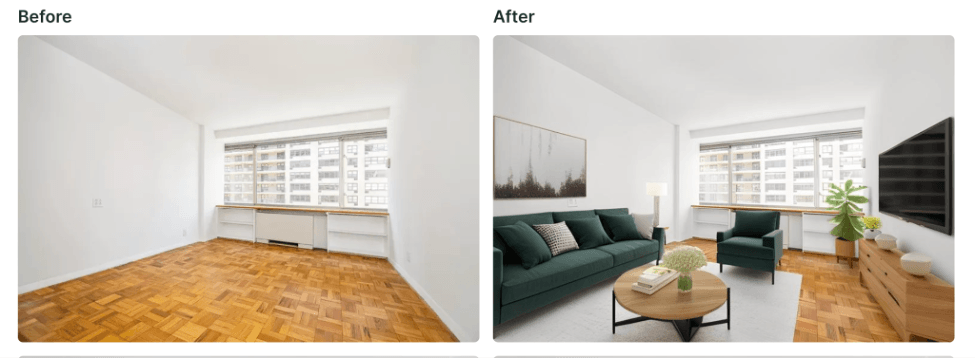
In general, AI home staging is very accessible to realtors working in any market. It is the lowest-cost option, yielding the highest return on investment.
Since it’s cheaper to use AI to stage homes, it’s reasonable to use it for properties where the asking price is relatively low. However, just because it’s cheaper doesn’t mean the quality suffers.
Additionally, the turnaround time with this staging method is as little as 10 seconds per image. This method is simple and convenient, so it’s accessible to anyone with a smartphone and a computer.
Challenges of Home Staging
Just as there are strengths to each staging method, they each come with unique challenges, ranging from cost to time requirements. Understanding these challenges will help you determine which options are best suited for the properties you’re trying to sell.
Let’s take a moment to explore the challenges of each method.
Challenges of Traditional Home Staging
Although traditional home staging can be valuable for creating immersive experiences for properties with a high listing price, it isn’t feasible for many properties with lower prices and smaller commissions.
For starters, this staging method isn’t very accessible. Staging a home is a laborious task, so it’s resource-intensive. It requires a lot of time to physically stage a home, requiring two to three weeks of lead time before the listing hits the market.
As we discussed, another major downside to traditional home staging is its hefty price tag. This makes it inaccessible to many real estate professionals. Sometimes, traditional stagers require a minimum of a three-month contract, which can bring the final staging cost above $7,000.
Plus, most locations are likely scarce on interior designers or stagers, leaving real estate professionals with much fewer options. Unless you’re in or around a major city, the pickings will be slim.
Challenges of Virtual Home Staging With Designers
There are a few notable challenges of using a designer for virtual home staging.
To start, since the renderings are virtual, there’s no way for buyers to see the property designed in real life. This situation may cause some buyers to feel misled or worry that the property is being misrepresented.
Although using a designer for virtual stagings is more affordable than traditional staging, it’s still significantly more expensive than virtual staging with AI. Plus, the turnaround time is longer than virtual staging with AI (24–48 hours vs. 10–30 seconds, respectively).
Challenges of Virtual Home Staging With AI
Although virtual home staging with AI is the most convenient method for many realtors, it doesn’t come without some minor downfalls.
For example, some buyers may feel misled or worry about misrepresented property since the images are created digitally rather than reflecting real items in a physical space. This is why accurate scale and attention to detail are paramount. These begin with high-quality photographs.
Additionally, virtual home staging with AI offers fewer design options than when working with a designer. There are typically options to provide general stylistic suggestions with AI staging tools, but there’s no way to communicate specific revisions.
Virtual Staging With AI Is the Future of Real Estate
Staging a property is key for real estate professionals who want to sell their properties quickly and for more money.
Since several home staging methods exist, it’s important to carefully consider the pricing, turnaround time, additional services, revisions, and customer support associated with each.
Working with a reputable professional service like Virtual Staging AI is a great way to minimize your staging expenses while generating beautiful images for your property listings. Plus, this technology spins up a perfect room design in just a few seconds.
Are you ready to try virtual staging with AI for yourself? Test Virtual Staging AI for free now. Simply head to our home page, upload an image, and get multiple staging options in less than a minute!